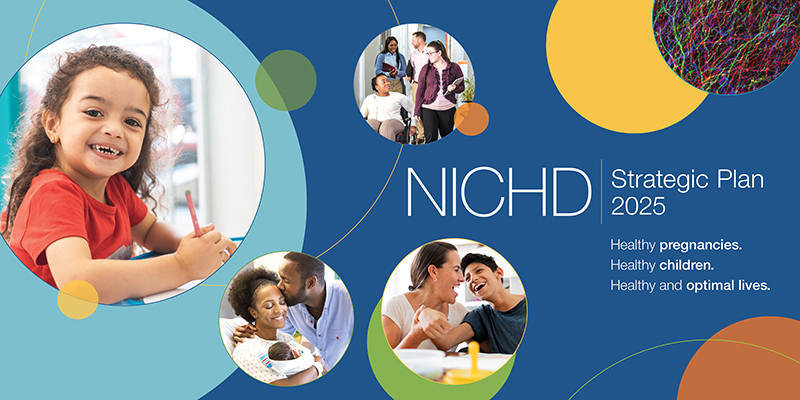
Recently, we released the NICHD Strategic Plan 2025, which will help guide the institute’s activities for the next five years. Publication of the plan marks the culmination of a collaborative process with internal and external experts that began in October 2023 to identify our scientific priorities and inform our future investments in research, training, and infrastructure.
Much has happened in the five years since we released our last strategic plan, and the updated plan builds on our progress since 2020. While our five major research goals are unchanged, we made substantial updates to reflect shifts in public health priorities and the evolution of new technologies.
- To work toward our goal of Understanding the Molecular, Cellular, and Structural Basis of Development, we plan to leverage new technologies and analytical techniques, including those powered by artificial intelligence.
- In recent years, we have advanced our fundamental knowledge of reproductive health, and the new plan shifts focus to translational and interventional research dedicated to Advancing Gynecologic, Andrologic, and Reproductive Health. We also place a stronger emphasis on gynecologic conditions such as polycystic ovary syndrome.
- The NIH-wide IMPROVE initiative, launched in 2019, and other projects have highlighted the importance of aligning research with community needs and preferences as we work toward Setting the Foundation for Healthy Pregnancies and Lifelong Wellness. Looking forward, we plan to build on these successes and sharpen our focus on stillbirth and preterm birth research.
- As we work toward Improving Child and Adolescent Health and the Transition to Adulthood, we have added emphasis on pediatric primary care and interventions to improve the health of children of all ages.
- We will build on work to implement the PRGLAC recommendations and the resources available through NICHD’s MPRINT Hub to further our efforts on Fostering Safe and Effective Therapeutics and Devices for Pregnant Women, Lactating Women, Children, and People with Disabilities.
These scientific research goals are linked by cross-cutting themes that include understanding the role of nutrition in promoting health throughout the lifespan, applying AI and other advanced technologies across biomedical fields, and providing training and career development for the next generation of researchers. Substantial progress depends on our ability to integrate and advance research on these topics within our scientific research goals.
The plan also establishes aspirational goals intended to serve as calls to action for the scientific community. Some of these are retained from the 2020 plan, such as accelerating efforts to definitively diagnose, prevent, and treat endometriosis. Other aspirational goals include advancing human limb regeneration, identifying properties of menstrual effluent and semen that could aid diagnosis of health conditions, and leveraging AI to help optimize pediatric well-care. Although these goals are ambitious, I hope that they will encourage scientists to work beyond traditional boundaries and collaborate on research that could lead to healthy and optimal lives for all.
I am grateful to all the NICHD staff who helped create the 2025 strategic plan, as well as the hundreds of external stakeholders and members of the public who contributed their insights throughout the process. Although we cannot anticipate all the challenges the future will bring, this plan provides a solid foundation for advancing health and quality of life through research and research training.
 BACK TO TOP
BACK TO TOP